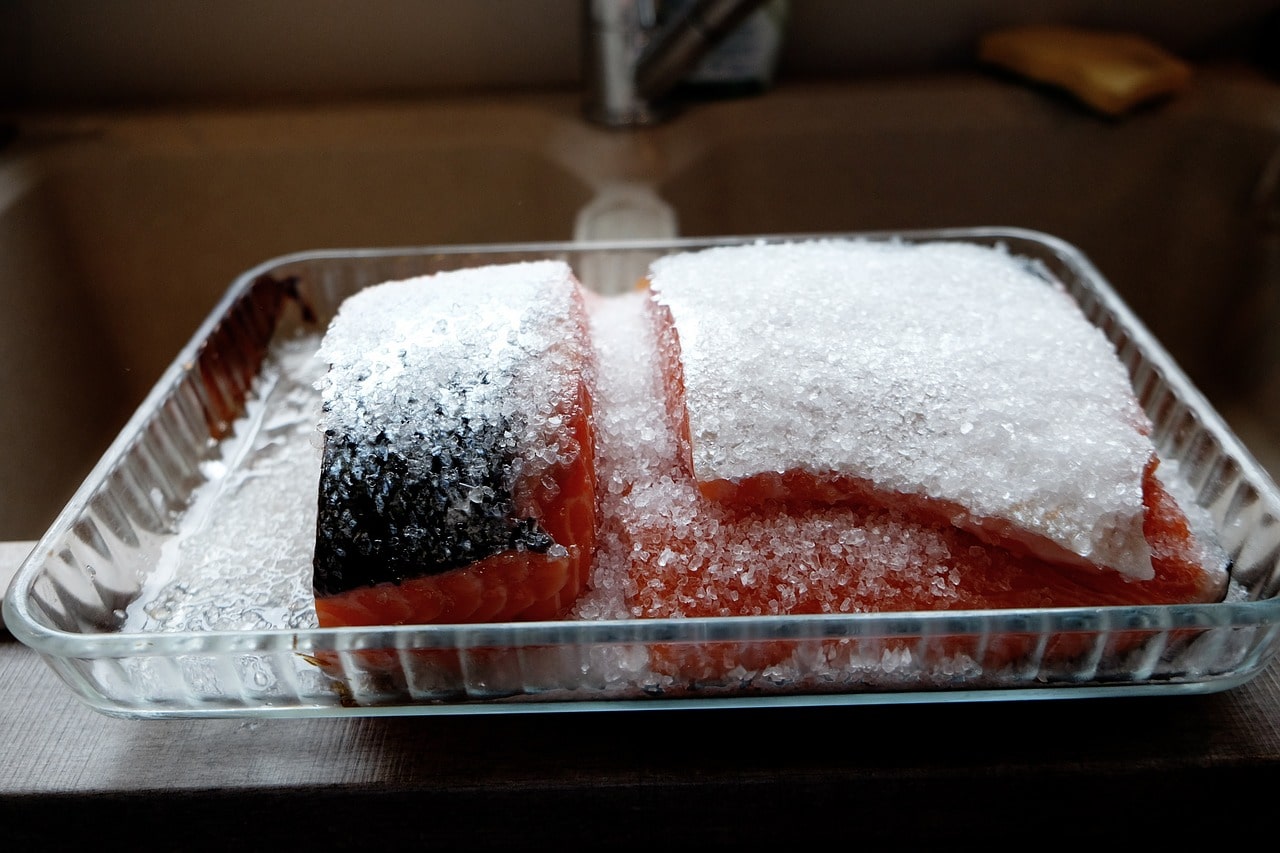Salmon is a popular go-to for many fish lovers because it packs plenty of flavors and is one of the healthiest fish around.
The benefits of salmon (regardless of whether it was farm-raised or not) equals or sometimes exceeds the benefits of other remarkable oceanic fish species like the Albacore tuna. It’s no small wonder that people want to store more salmon at home. But how exactly do we do this properly? Let’s find out today.
Does Freezing Salmon Ruin It?
Speaking, no, freezing will not ruin salmon. Freshly caught salmon is flash-frozen before being vacuum-packed to supermarkets, so there is no worry if you bought fresh salmon and froze it afterward.
Can I freeze fresh salmon from Costco?
Fresh salmon from the supermarket can be frozen, even when you have removed a few pieces for cooking. Limit the time that the fresh salmon stays outside at room temperature to reduce bacterial growth chances.
You must freeze large quantities of fish immediately and take out only what you need. Keep all your salmon fresh and viable.
Can Frozen Salmon Go Bad?
Frozen salmon will not go bad if you consume the salmon within one or two months. Frozen salmon doesn’t ‘go bad’ the same way that other foods go when they are placed at room temperature or refrigerated and are still fresh or uncooked.
If you buy frozen salmon from the supermarket and place it in your refrigerator, the frozen salmon will be effectively thawed in 24 hours.
After this period, the salmon will eventually disintegrate even if it is in your refrigerator. Cook the salmon and refrigerate it within two hours of cooking if you want to keep it longer.
Food left out at room temperature for four hours or more may not be safe for consumption anymore. That is how it works, and all home cooks need to realize that they need to refrigerate or freeze quickly if they want to avoid foodborne pathogens.
Can You Refreeze Previously Frozen Salmon?
In a nutshell, no, it is not recommended that you refreeze previously frozen salmon. Any fish or meat that has been at room temperature for an hour or so is no longer considered safe for refreezing. This is following the standard safety protocol for fish and other meats.
Now, let’s say that you have some leftover fish in the packet and you don’t want to throw it away; what should you do? Instead of refreezing the bag of uncooked fish, we recommend that you cook it and then pack it for freezing. You can steam or fry the fish and then pack it again.
There is nothing wrong with packing and freezing cooked fish, and this way, you will be able to keep your fish longer in the freezer. Any cooked fish should only be refrigerated for three to seven days maximum.
The target temperature is 32°F-39.2°F or 0°C to 4°C. Any more than 4°C/39.2°F may already encourage bacterial growth, which can then lead to foodborne illnesses.
This is the safest range for both fresh fish and cooked fish. If you are unsure, measure the temperature of your refrigerator. If the refrigerator cannot get cold enough, we recommend freezing your salmon instead.
Can You Freeze Salmon with The Skin On?
There is nothing wrong with freezing salmon with its skin on. However, many people don’t eat it, and if you don’t, there is no reason to freeze it along with the meat. Many people don’t like the overly fishy and oily smell of salmon skin, anyway.
So if you have several pounds of salmon fillet with the skin on, we recommend removing the skin first and discarding the skin completely. If you want to have a really easy time cooking salmon, later on, you will need a boning knife and some plastic wrap.
Remove the bones from the fish as much as you can and wrap the fish tightly with plastic wrap. The plastic wrap will prevent air from coming into the packaging. Air eventually crystallizes into moisture and ice, and ice will ruin the meat. You don’t want that if you want to have almost fresh-level quality salmon when you that your salmon later on.
How Do You Prepare Salmon for Freezing?
It’s very manageable to prepare fresh salmon for freezing. Follow these steps:
- If your salmon has already been vacuum-packed, don’t open it anymore. Freeze your salmon as it is. If your purchased loose strips or chunks of salmon, that’s when you need to prepare the salmon for freezing.
Begin with a sharp knife so you can debone the salmon properly. Remove the majority of the bones that you can find, as these can poke holes through the plastic wrap. - After deboning your salmon, portion the fish into individual fillets. You’re free to size your salmon as you see fit. If you want larger fillets because you have a bigger appetite and don’t want to cook so many fillets at a time, feel free to double the portions’ size.
- Take a measure of plastic wrap and wrap the individual fillets tightly. There’s no need to squeeze the fillets, but there have to be several layers of plastic wrap to prevent air and moisture from penetrating the packaging.
- Continue wrapping and unrolling the plastic wrap until all of the fillets have been wrapped. For good measure, wrap the fillets again with a single layer of aluminum foil before freezing. You can place the fillets in a single layer on a small tray or place them in a big zip-top bag.
How Do You Thaw Frozen Salmon?
The safest method of thawing frozen salmon is placing them in the refrigerator a few hours before cooking.
Unlike other types of meat, fish can defrost more quickly. However, if your fish has been deep-frozen for months in a chest freezer, you may need to wait at least 24 hours before cooking your fish to ensure that all the frost has gone away.

